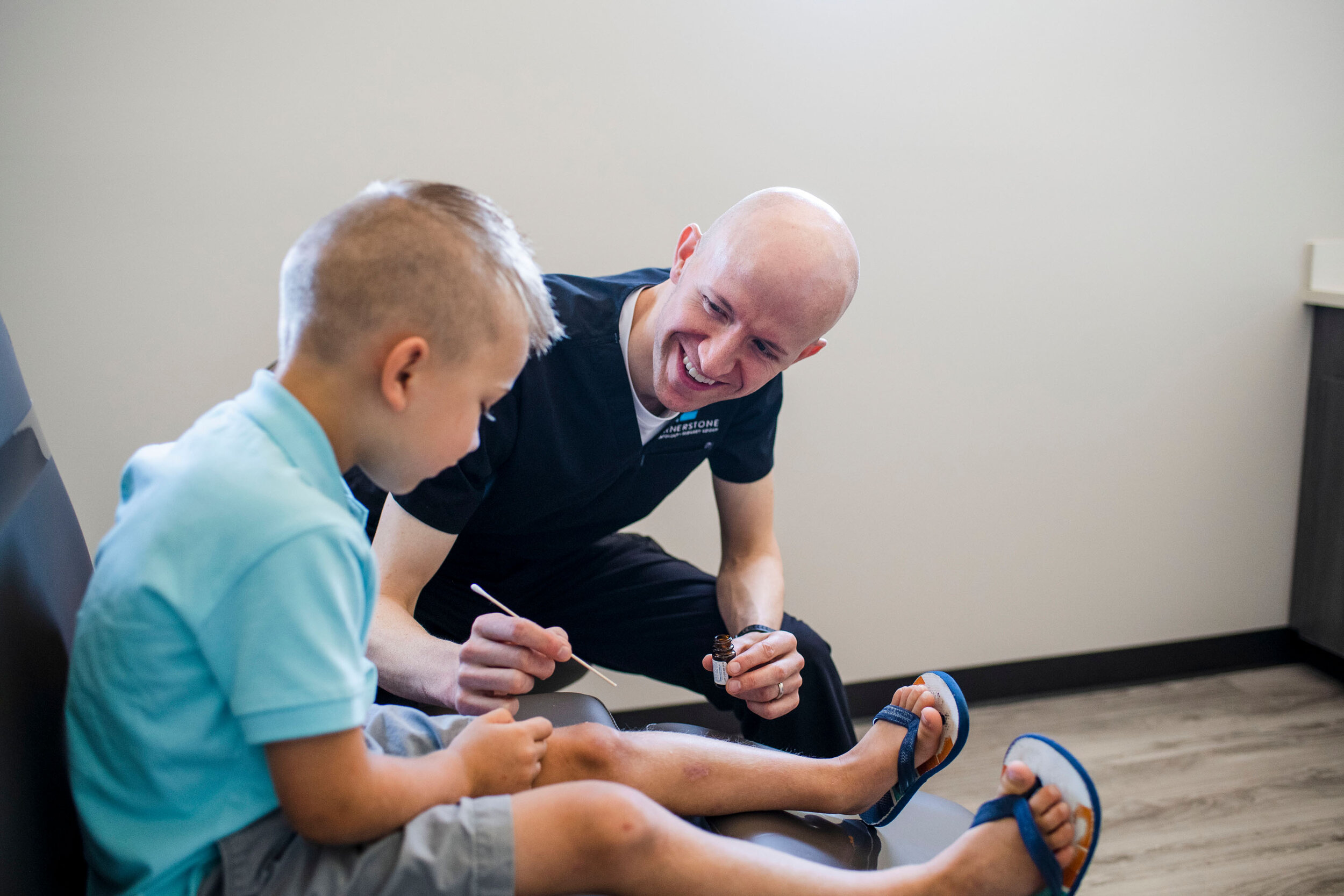Molluscum Contagiosum: Treatments for a Common Childhood Virus
If you’ve noticed a smattering of pearly, flesh-colored bumps on your child’s skin, this could be a condition known as molluscum contagiosum, which is commonly spread among children participating in contact activities with shared surface areas such as wrestling, basketball, swimming and football.
Molluscum contagiosum primarily affects children ages one through 10 and is generally harmless to those with a healthy immune system. While it usually clears up on its own within a few months to a few years, there are some factors to take into consideration when deciding whether you want to leave the bumps alone or pursue treatment, says David Fieleke, MD, board-certified dermatologist and owner of Cornerstone Dermatology.
Molluscum Contagiosum: To Treat or Not to Treat?
“The name ‘contagiosum’ is a great giveaway, because molluscum is spread via skin-to-skin contact,” Fieleke says. “So if your child is using shared gear or playing in spaces with potential body contact (such as swimming pools or gym mats), you’ll need to keep all those bumps covered tightly to avoid spreading the virus to friends and teammates. If that’s unappealing, choosing treatment rather than letting them resolve themselves may be the best option.”
If molluscum bumps seem to be rapidly spreading or if they’re causing your child emotional distress or embarrassment, these could also be important factors for pursuing treatment rather than letting them resolve on their own.
Ironically, what many parents interpret as a sign that molluscum need treatment, can be just the opposite.
“A lot of parents worry when they see the molluscum bumps becoming red, swollen, or crusted,” Fieleke says. “But usually this is just a sign that the body’s immune system is fighting off the virus.”
Molluscum Contagiosum Treatment Options
If you do opt for treatment, there are a few options to consider that are performed in-office at Cornerstone Dermatology.
“We can freeze the bumps with liquid nitrogen to kill the virus inside, but patients will feel the burn as the treatment is applied,” Fieleke says. “For kids who are averse to a little pain, we may opt for an alternative treatment modality.”
An alternative and generally painless treatment for children, is the application of a liquid known as Cantharidin, originally isolated from a blister beetle and also known as ‘blister beetle juice.’
Keep in mind that molluscum can most quickly and effectively be treated before they have spread widely and to multiple parts of the body. Our hope is that the molluscum contagiosum virus would be killed at its core and bumps eliminated after blisters have healed from just one treatment, but the reality is that multiple treatments are sometimes necessary.
To schedule an appointment for molluscum contagiosum evaluation and treatment, call Cornerstone Dermatology at 816-287-1528.


